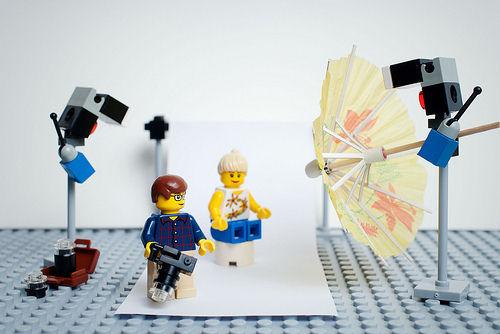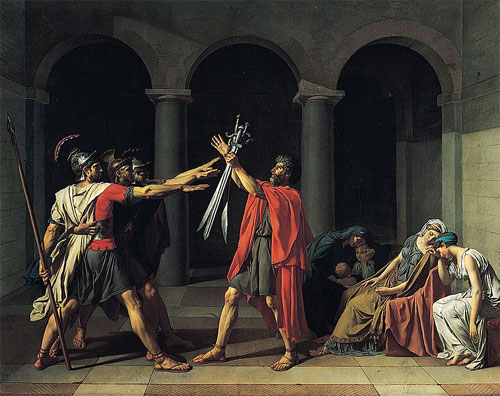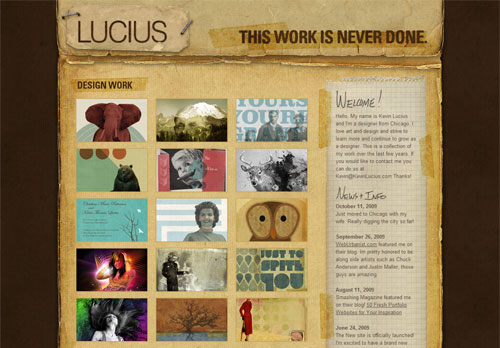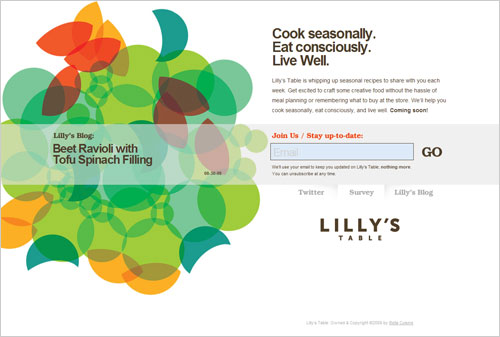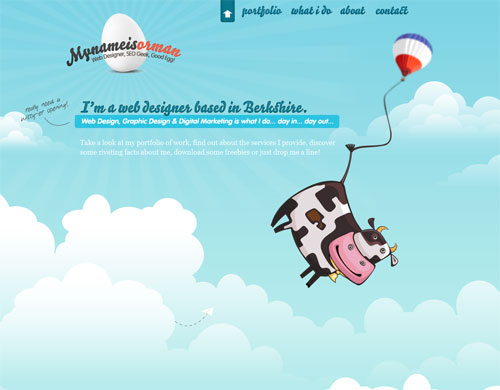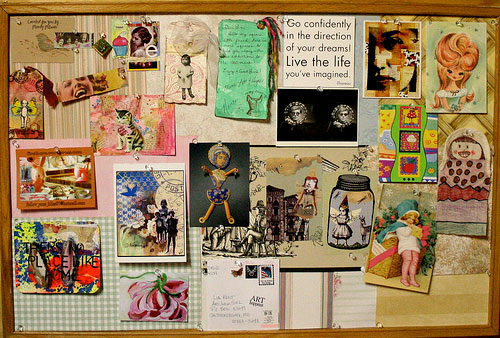Offline Inspiration: How To Find It and Get The Most Out Of It
No designer should ever feel that taking time to find true inspiration is time wasted. This article explores offline sources of inspiration and discusses how they can be treated as a part of the design process. Furthermore, we’ll look into a few methods of deriving this inspiration, so it becomes an active part of creativity and be done more effectively.
Also consider our previous articles:
- Finding Inspiration in Uncommon Sources: 12 Places to Look
- Inspiring Everyday Graphic Design
- If Famous Graphic Artists Were Web Designers…
1. Stop The Quick Fix Of Online Inspiration
The first step to getting into the habit of finding offline, or “natural,” inspiration is to stop looking at online inspiration in the first place. For many designers, online is the first place to look. It shouldn’t be.
The problem with showcases and galleries is that most of us tend to copy bits and pieces of them, thus creating a mish-mash of everything we’ve seen. This isn’t how design, or any creative field, should work. While graphic and Web designers are different from traditional artists, we should treat the creative “back end” any different. After all, we got into this field to be creative and express our artistic talents, so why don’t we?
Online Inspiration Isn’t Bad
Before delving any deeper, let’s get one thing straight: the point of this article is not to say that online inspiration isn’t unproductive in any way. In fact, it is quite a good thing and can very well produce the intended effect.
The unproductive part is when designers turn to it as their sole channel of inspiration. Showcases and galleries, rather, serve best as examples of best practices and ideas. Our designs should stem instead from our own creativity, aided by this online inspiration.
How to Stop the Cycle
For many of us, going to a CSS gallery the moment we start working on a new project is routine. Whether because we are behind in our work or just anxious to get started, true inspiration gets put on the backburner more and more over time. Hopefully, this article will help convince you that finding true inspiration is necessary to the design process. Even if you’re convinced, though, breaking old habits can be hard.
The trick is to consider alternative inspiration an an essential part of the job. While it feels more like play than work at first, finding true inspiration should mean more than browsing through the same material over and over. And we should know that in a creative industry, having fun is okay; it doesn’t mean we’re being unproductive.
We have to consider taking a walk, visiting a museum and sketching as parts of our job description, things that help us get our jobs done faster and less painfully. We’ll discuss below when we should seek out these other forms of inspiration and when it is okay to sift through galleries and showcases.
2. Forms Of Offline Inspiration
Let’s start by discussing what we can do to derive new forms of offline inspiration. Below are some tried and true methods for uplifting one’s inner creativity… without using a browser.
Nature
Nature is easily one of the places to find inspiration. Not only does it have variety, color and interest, but it takes its effect on us by mere instinct. Because of this, finding inspiration on a walk, a hike or just sitting in a park doesn’t take much effort. Let’s look at a few specific places where one can find it, though.
Weather Weather is just one part of what nature has to offer. Because weather is so closely related to mood, it can be a great source of inspiration. Think of your favorite season, a stormy night or a sunny day at the beach; take in the colors, textures and mood and implement them in a design.

Life Forms While weather can influence and inspire mood, life forms have yet far more variety than weather. Whether plant life or animals, a number of exquisitely designed elements are available from which to draw inspiration, through texture, shape, color, etc.

Geography and Landscape Geography and landscape is another major source of inspiration. Taking in your natural surroundings can have a calming effect on your mind and motivate you to design. Beyond whatever comes to you naturally, look at shape, texture and color, too.
The above are just a few quick examples of how nature can and should be used for inspiration. These are definitely the first choices for many designers who want a new creative outlook, and for a great reason.
The trick is to figure out how to get workable inspiration from nature and integrate it into a design. For specific examples on how to achieve this in detail, check out 17 Techniques for Creating Designs Inspired by Nature.
Museum Visits
Like nature, simply walking through a museum can relieve stress and, in turn, inspire. It doesn’t have to be a museum for art or design either. A science museum, historical museum or even aquarium or zoo can work. The point is to see things that are not in our everyday lives, while being in an environment that allows you to really focus on and appreciate them.
Being in a museum can lead us to new things, such as:
- Alternative cultures and their arts;
- Traditional or classical art;
- An attention to different senses and a more empirical way of thinking (think of a science museum);
- Weird, strange or outrageous exhibits to help us think outside of the box (like a “Ripley’s Believe It or Not” museum);
- Historical objects that are shown in photographs and other media.
Because these experiences can lead to such alternative ways of thinking, they are great for getting away from the daily grind that is suppressing your imagination.
Drawing and Sketching
Many designers begin a project by sketching, but far too many jump straight into wireframes, layouts and then the final draft.
Instead of starting the design phase cold, sketch freely. Doodle, draw ideas, sketch abstract and non-abstract textures and shapes. When sketching for inspiration, don’t think of it as any other stage in the design process. Have fun with it; be carefree and laid back. Free-drawing is a great way to put all of those ideas in your head down on paper.

Comic Book Style on GoMediaZine.com
Many designers very likely grew up sketching and drawing. A lot of us probably had books or other resources on “How to draw,” explaining the technical aspects of drawing characters and other subjects. Doing this now at a more advanced level can be inspirational. Doing so, we advance our skills and are motivated to practice new illustration techniques. So, make an effort to refine your basic drawing and sketching skills.
For a great list of tutorials, check out 40 Free Tutorials on Advanced Drawing Techniques.
An Alternative Hobby
Experiencing new things is a part of life. Without this, we fall into a rut. Think about it: when we began designing, we were full of ideas, motivation and inspiration. After doing it for so long, though, designing can become routine and uninspiring.
This is a part of life. But we obviously can’t quit our jobs and pursue unrelated goals whenever we feel like it. Instead, we must find a way to keep life exciting while maintaining our careers.
Try a new hobby that you find exciting, and then bring it into your designs. For example, if you’re learning a new language, incorporate the culture and styles associated with that language into your designs. If you’re learning a new craft, how can you incorporate the textures, shapes and actions of it into a design? Countless hobbies are out there. No matter how quirky or seemingly unproductive yours is, if you have a passion for it, it will help.
It doesn’t even have to be a hobby, but just something to get your mind off of work. For example, if you’re redecorating a room, there had to be some initial inspiration that drew you into it; use that spark in your design. Other life experiences involving family, friends and events can play a role in design, too.
The point is to enjoy hobbies and general life events more, and stop thinking of them as unrelated to work.
Music
Music brings emotion and puts imagery in our heads. It is a great art to jog our imagination.
While the techniques mentioned thus far may appeal only to some people, everyone should try music, because it relies on no visual source and can lead to the most creative outcomes. Deriving inspiration from music may not be as easy (because it is more abstract than a pattern, texture or shape), but it certainly gets our imagination and creativity flowing.
How you use this method is really up to you, but for more tips, check out Smashing’s other post, “Drawing Inspiration From Music.”
Photography
Using photos is an excellent way to incorporate many of the above methods, without having to travel around the world. Flying across the world to see the wildlife in the jungle or a foreign culture’s practices is not practical. Photographs, rather, capture real-life images from which you can draw inspiration and come up with texture, shapes, subjects and more.
While photography can be considered “online inspiration,” it is different in that one cannot take bits of a photograph and turn it directly into a design (the way you can with another website). Rather, one must use skill and creativity to turn it into a workable design, just as you would use a natural object in the wild.
Below are a few favorite photography showcases to get you inspired:
- Beautiful Black and White Photography
- 35 Examples Of Stunning Macro Photography
- Stunning Space Photography
- 40 Delightful Pieces of Tilt-Shift Photography
Traditional Art
Each era of art has its own style and development. We often focus too much on today’s trends that we forget all of the excellent art of the past.
Research any era of art history. You will discover many great works of art, as well as techniques that the masters of that era followed.
As with any other form of inspiration, take texture, color, shape, style and depth into account. In viewing art from different eras and cultures, we can draw inspiration from the style without copying the subject.
One’s Own Imagination
Think like a child again. With a bit of relaxation, we can come up with our own ideas again, without even an external trigger of the imagination. We can’t elaborate much more on this: the method will be unique to each individual. But it is bound to create the most original designs of all.
For a few fun tips on how to be imaginative, take a look at the simple WikiHow article ““How to Be Imaginative.”
3. Deriving Inspiration From These Sources
Knowing how to find inspiration through alternative sources comes down to the art and science of design. Rather than merely copy trends and examples, we have to use our knowledge of texture, shape, proximity and so forth to build fresh design. Our new sources of inspiration may now be difficult to harness but are sure to release our creativity.
Here following are some basic guidelines you can take to derive inspiration from any offline source.
Look at Texture
Many sources of inspiration are visual in nature, which means they may have interesting textures, whether from an animal skin or a wrinkled petal.
Many designs are not much more than texture at all. But even without conventional imagery, we understand the design perfectly well.
Everything Has a Shape
Everything has a shape that highlights its texture. We look at different shapes every day, but rarely do we stop to appreciate it. No matter what it is taken from, a design could resemble the source of inspiration itself or just bits and pieces of it.
Take the time to examine the object’s shape, angles, edges and dimensions. They may spark new ideas or lead to an idea for an element in your design.
Color and Palettes
Nature-inspired Web design was quite a trend there for a while, and it is still going pretty strong. The trend is notable because color is given such special attention and is implemented so carefully in designs. Green, blue and brown earthy hues are incredibly popular, and these colors and a bit of authentic texture are all a design needs to be nature-inspired.
We can apply the same attention to other offline sources of inspiration. For example, painters from different eras preferred different color palettes, and we can borrow these palettes for today’s designs. Likewise, different cultures, landscapes and imagery all provide a unique sets of colors to inspire us. All we have to do is stop and take notice.
Take an Alternative Perspective
Viewing the things we see every day from a fresh perspective makes them design-worthy. This could mean viewing them close up, upside down, from far away or from an entirely different angle. Whatever you choose, look at an object from an unusual perspective to discover something new about it.
Choose a Theme
We can be motivated to create something new after winding down for the day, after taking a walk, or after viewing some interesting photographs. But when it comes down to actually designing, we may still not know where to begin.
Just as we did when writing essays back in high school, we must first define our design’s theme; that is, come up with a “thesis” for our design. We may be inspired by Renaissance art that we viewed at a museum, but we might find that there is too much in the artwork to base a design on.
This is when we need to get specific. Should your design reflect the textures, colors and shapes of that era, or should it evoke a typical publication of that era (a website being a publication itself after all)?
Come up with a specific subject and idea for the design, taken from your much broader source of inspiration. Don’t just go with a nature theme; choose a cheerful snowy morning theme. Don’t use a book as a whole, but rather use an event recounted in the book, or an emotion that the event evokes.
You could incorporate a number of ideas from any source of inspiration, so be specific and choose one particular message to guide the design.
Collect Resources and Bits of Inspiration
Before starting the design phase, collect resources that you will need to complete the design. If your design is inspired by Renaissance art, assemble tutorials on creating old-paper effects, gather some period typography and collect any other textures, symbols, shapes and imagery that could be used in the design.
What’s great about this part is that even though you’re not actively designing, you’re still putting pieces together that will guide you to the final design. In other words, you’re in the process of brainstorming.
4. When To Use Offline Inspiration
There is a trend among designers to say that any offline inspiration is okay, but offline and online inspiration need to be balanced.
Offline inspiration sources are best for the early phases of a design. They keep you from going straight to CSS galleries the moment a new project begins, only to copy elements of the most original designs. Offline inspiration helps us come up with our own ideas and fall back on our own creativity.
5. When To Use Showcases And Galleries
Showcases and galleries are not a great source of inspiration early on. Rather, they are great to learn best practices and refine usability and see examples of how specific elements have been implemented. They are useful for turning inspiration into a workable design with solid usability.
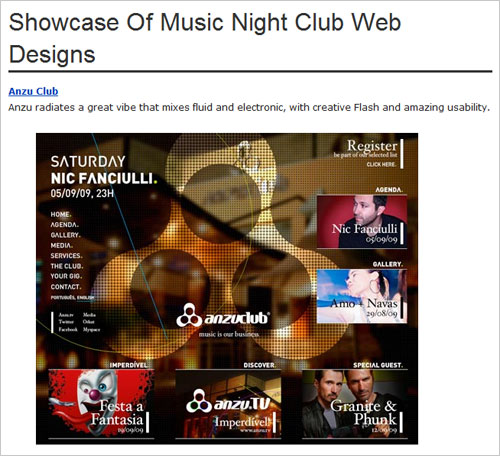
Showcase of music night clubs web designs here, on Smashing Magazine.
For example, if you’re designing a blog theme, you could look at the styles of various “Read More” links and see which ones have the best effect. You could check out the navigation style of different website types (e.g. portfolio, realty website, Mac application website, etc.). Consistency among certain website elements is a good thing.
Showcases and galleries can also help generate ideas for style. An app website, for example, obviously wouldn’t look good with a grunge style. Some stylistic choices may not be that obvious, though, and CSS galleries can help us achieve a look that is original yet appropriate.
Conclusion
As you can see, both offline and online inspiration have their place. Knowing when to use each is the key to getting your creativity back and producing some original work once again. Hopefully, this post has motivated you to take the time to find alternative sources of inspiration.
We have just briefly touched on methods of finding alternative inspiration. There are, of course, many more. Feel free to share your own habits and techniques for gaining inspiration. The ways are surely endless, and we have to find the one that works best for us.
Further Resources
You may also be interested in these additional references:
- CSS Galleries – Getting the best out of them A contrasting article on how to get the most out of an online form of inspiration, CSS galleries.
- How To Find Design Inspiration Sitepoints offers a series on methods for finding offline inspiration.
- 10 Unusual Places to Get Design Inspiration An article discussing 10 different methods for finding alternative inspiration, and how to effectively draw from it.





 Agent Ready is the new Headless
Agent Ready is the new Headless Save 60% on Vue School Black Friday Sale
Save 60% on Vue School Black Friday Sale SurveyJS: White-Label Survey Solution for Your JS App
SurveyJS: White-Label Survey Solution for Your JS App

